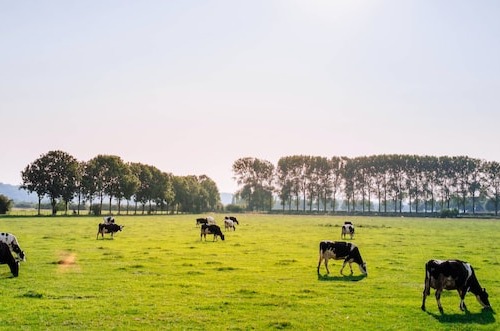W4 Dairy Update: Stability Forecast for 2024 Despite Growth Limits, New Zealand Dairy Sees Uptick in 2023

2023 Global Dairy Market Reported Stagnation and a Transition to Emerging Regions
Theglobal dairy industry navigated a challenging landscape in 2023, marked by rising production costs, weak demand, and fluctuating prices. 2022 witnessed a significant surge in production costs, with concentrated feed, fertilizers, and energy experiencing year-on-year (YoY) increases of 20%, 51%, and 107%, respectively. This, coupled with geopolitical instability and the lingering COVID-19 pandemic, fueled inflation and market uncertainty. Global demand for dairy products grew just 0.8% in 2023, barely keeping pace with population growth. This stagnation was further exacerbated by reduced imports from China and a decline in global dairy prices. Prices recovered slightly towards the end of the year, but remained below the International Fact-Checking Network (IFCN), reporting the global average producer price of USD 0.40/kg milk.
Traditional dairy production regions like the European Union (EU), Eastern Europe, South America, and Oceania observed stagnating or declining milk output in recent years. In contrast, emerging regions like Africa and Asia, with a significant presence of informal production, registered positive growth in milk supply. Asia, notably, saw a remarkable 4.3% annual increase since 2010, fueled by rising domestic consumption, lower labor costs, and resilient traditional production systems.
India is dominated by small-scale, informal dairy producers with low productivity which is below 2,000 kilograms (kg)/cow yearly. Buffaloes contribute to half of the country's milk production. China represents 15% of Asian production, characterized by large-scale farms and high average cow weight (over 7,000 kg/cow yearly). Boasts one of the world's highest producer prices at USD 0.62/kg in 2022. Brazil’s milk production has stagnated at around 34 million metric tons (mmt) per year since 2013, facing competitiveness challenges against imported products. Imports reached 9% of inspected domestic production in 2023, resulting in a record trade deficit. Despite cost reductions in the latter half of 2023, producer prices declined, impacting profitability, especially for smaller farms. Early 2024 indicates rising international and domestic dairy prices, offering hope for producer price recovery in the coming months. However, uncertainties around grain harvests and silage production necessitate close monitoring of cost evolution.
Modest Growth in New Zealand Dairy Production and Stability Expected in 2024
In 2023, favorable weather conditions in New Zealand contributed to a 0.9% YoY increase in milk production, totaling 21.25 mmt, with a more substantial 2.1% rise observed in processed dairy ingredients. Despite a YoY increase, projections for the 2023/24 season anticipate limited expansion due to declining cow numbers and production constraints. The increase in milk production was notable, particularly in the first half of the calendar year, with deliveries exceeding 2022 levels until May-23. From Jun-23 onward, milk production slightly lagged behind the previous year, though this did not apply to milk solids.
The New Zealand Dairy Association (DCANZ) reported an increase of 196 thousand mt in milk production compared to 2022, while processed milk ingredients, totaling over 1.88 m mt, saw a 2.1% YoY rise. In the first seven months of the 2023/24 season, milk production slightly decreased by 0.3% YoY, marking the lowest volume in over five years. Conversely, dry milk solids processing saw a 1.1% YoY increase. The forecast suggests a nearly stable milk production scenario in New Zealand for the entirety of the 2023/24 dairy season.





